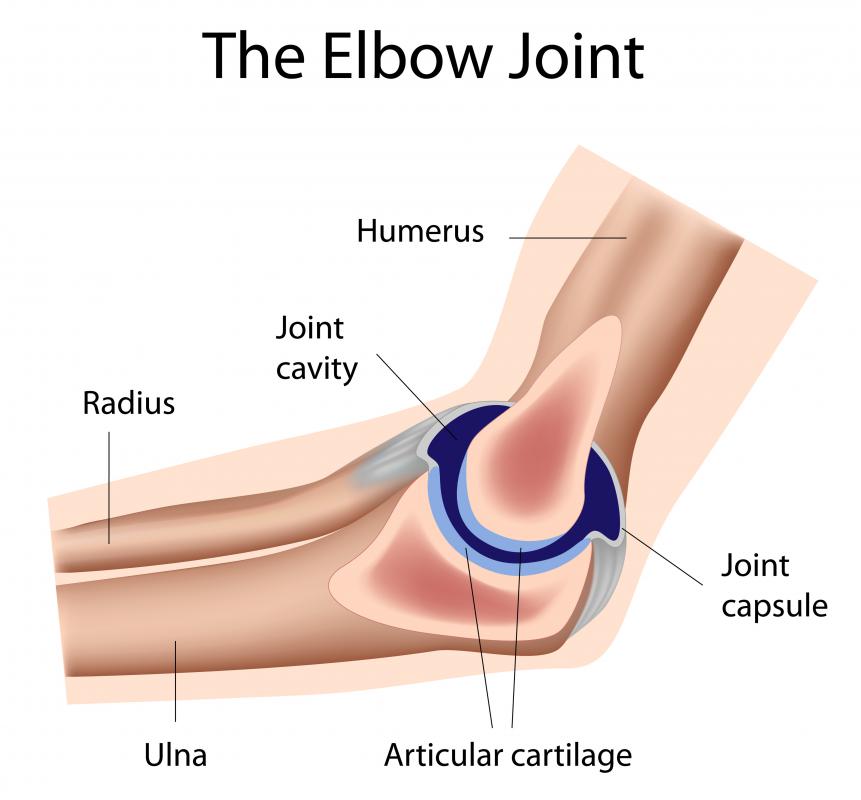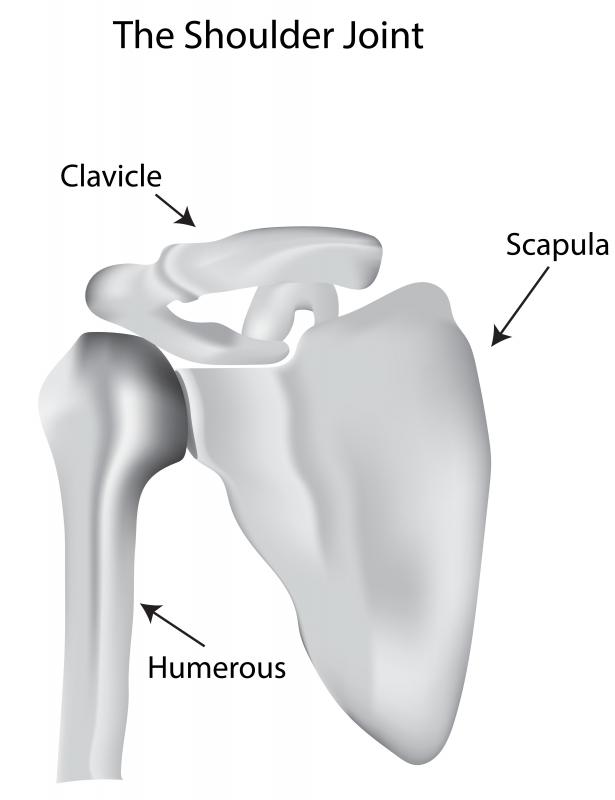At WiseGEEK, we're committed to delivering accurate, trustworthy information. Our expert-authored content is rigorously fact-checked and sourced from credible authorities. Discover how we uphold the highest standards in providing you with reliable knowledge.
What Are the Different Types of Joints in the Skeletal System?
While there are many different types of joints in the skeletal system, each type fits within one of three categories. The first of these categories includes joints that do not move, known technically as fibrous joints. A second category, called cartilaginous joints, includes joints that have a limited range of movement. The final category, synovial joints, is made up of joints that have a wide range of motion. It is the synovial joints of the skeletal system which facilitate many bodily movements.
Fibrous joints occur where two pieces of bone are connected to one another in such a way that the connection point does not move. The joint which connects these bones is made up of a tough ligament, providing a rigidity that can help protect the fragile organs that lie beneath them. Examples of fibrous joints in the skeletal system include the joints which connect the bones of the skull and the joints that join the teeth to the jaw.

Those joints in the skeletal system which offer limited movement are known as cartilaginous joints. As their name suggests, these joints are made out of cartilage, a type of tissue which is more flexible than that which comprises fibrous joints. Cartilaginous joints can be found in between the vertebrae of the spine. It is these joints which allow the spine to twist and bend.

The joints in the skeletal system responsible for many crucial bodily movements are the synovial joints. This category of highly movable joints is made up of a combination of cartilage and a structure known as a synovial capsule. The synovial capsule secretes a liquid called synovial fluid which acts as a kind of “grease” for the joints, allowing them to move easily.

Six individual joint types fall within the category of the synovial joints: ball-and-socket joints, hinge joints, pivot joints, saddle joints, gliding joints, and condyloid joints. Found in the hips and shoulders, ball-and-socket joints can rotate in many directions, and consist of a “cup” which surrounds a round-ended bone. The knees and elbows are hinge joints, which can be extended or bent, and the neck is a pivot joint, which allows for a rotating movement around a central axis. Saddle joints, gliding joints, and condyloid joints are primarily found at the conjunctions of the small bones of the hands, wrists, feet, and ankles, and allow for the up and down or back and forth movement of these body parts.
AS FEATURED ON:
AS FEATURED ON:



















Discussion Comments
The neck joint is kind of interesting. I never thought too much about it being a joint. But it does provide a pretty wide range of movement in a half circle axis. Wouldn't it be something if our necks joint was designed like an owl. Then we could turn around only our heads and see what's going on.
Some of our other joints just move up and down, like fingers and toes. Others, like the thumb, ankles, and wrists can go up and down and side to side.
I have over-extended joints, or what some call double jointed joints. They move farther than they are supposed to, so I have had quite a few chronic injuries to my various joints. Not a fun situation. But I can still bend down from the hips and touch the floor with flat hands!
@John57 - I know what you mean about the knees losing function as you get older. When I was younger, I never thought about the knee joints not doing what they were meant to do - like jump, run up and down stairs, get down on the floor and back up again, and run. Now I can't do any of those things very well.
I recently got an injection of synthetic synovial fluid into my knee. It has helped quite a bit. The pain is less and walking is easier, but the cartilage is still disappearing. I'll no doubt need a knee replacement some time in the future.
It seems like growing older and having joints that work like they are supposed to don't go hand in hand very well.
I don't remember for sure when it happened, but somewhere around 40 years old, I realized it wasn't as easy getting up off the floor any more and most of that was attributed to sore joints.
Now, I am facing possible knee replacement surgery because there is not cartilage left between my knee joints.
You can only switch positions so many times and you get to the point where nothing feels comfortable for very long.
I often think about young athletes who put their bodies and joints through a lot of abuse. This is something that doesn't usually catch up with them for a few years, but as they get older, they start wondering if it was really worth it.
Post your comments